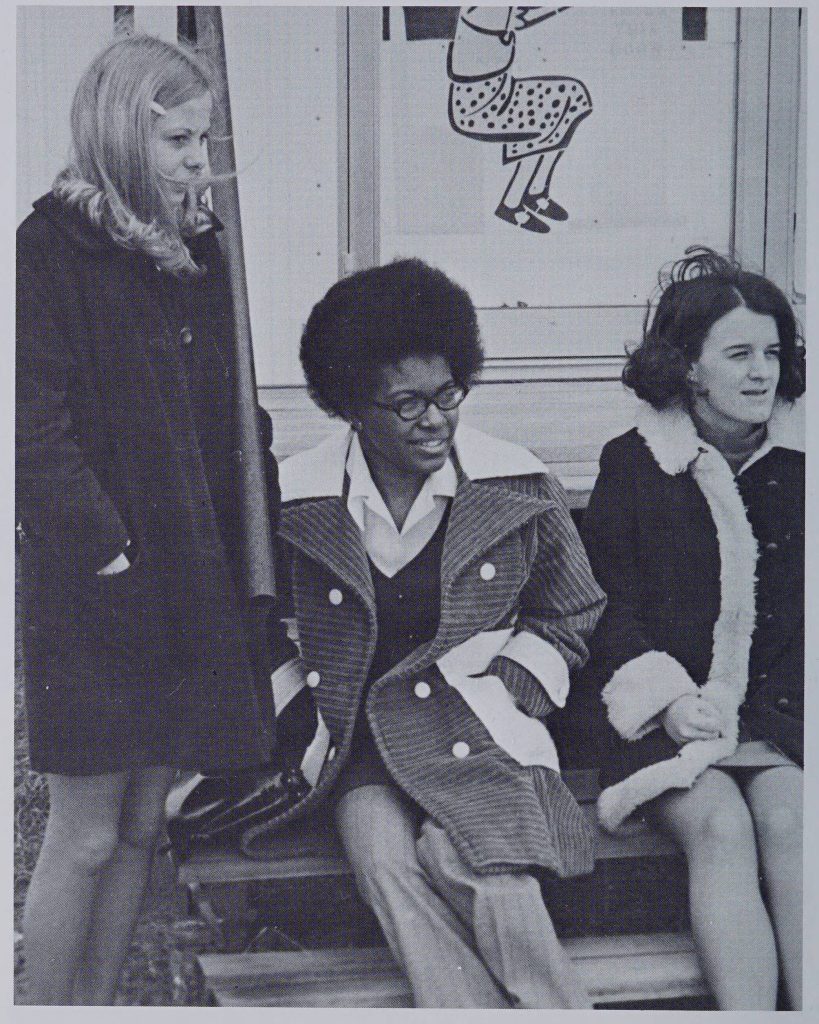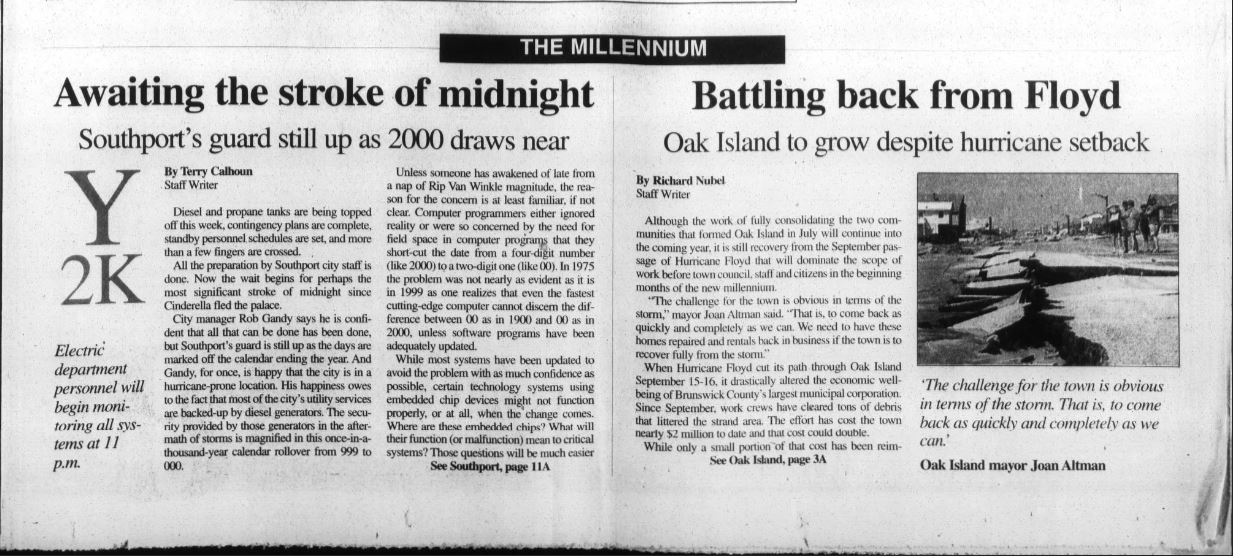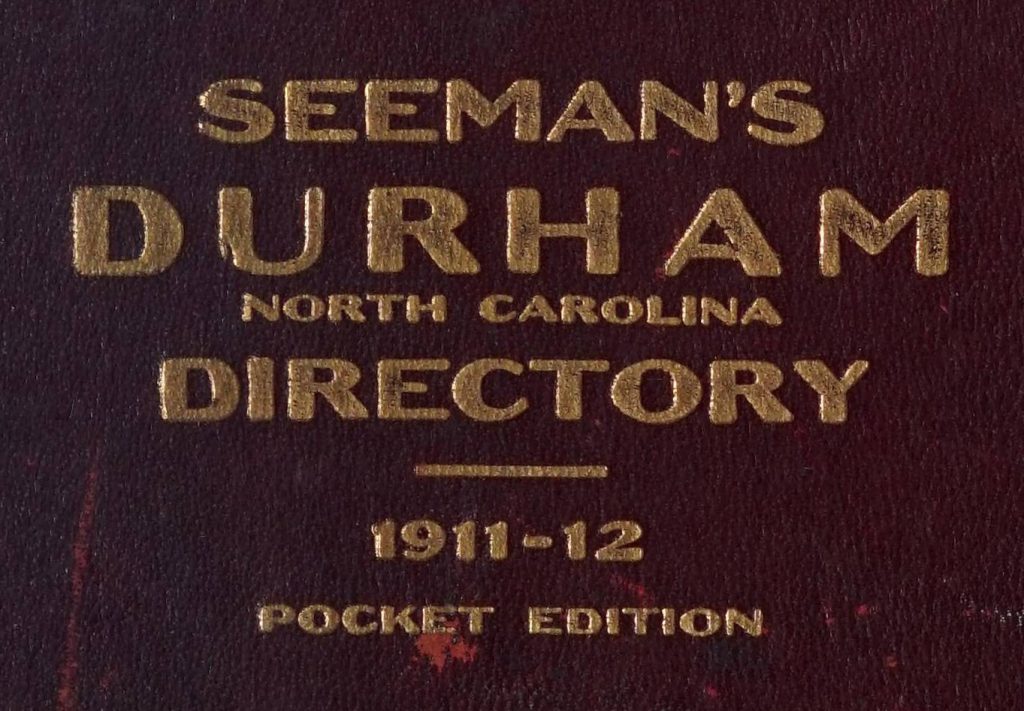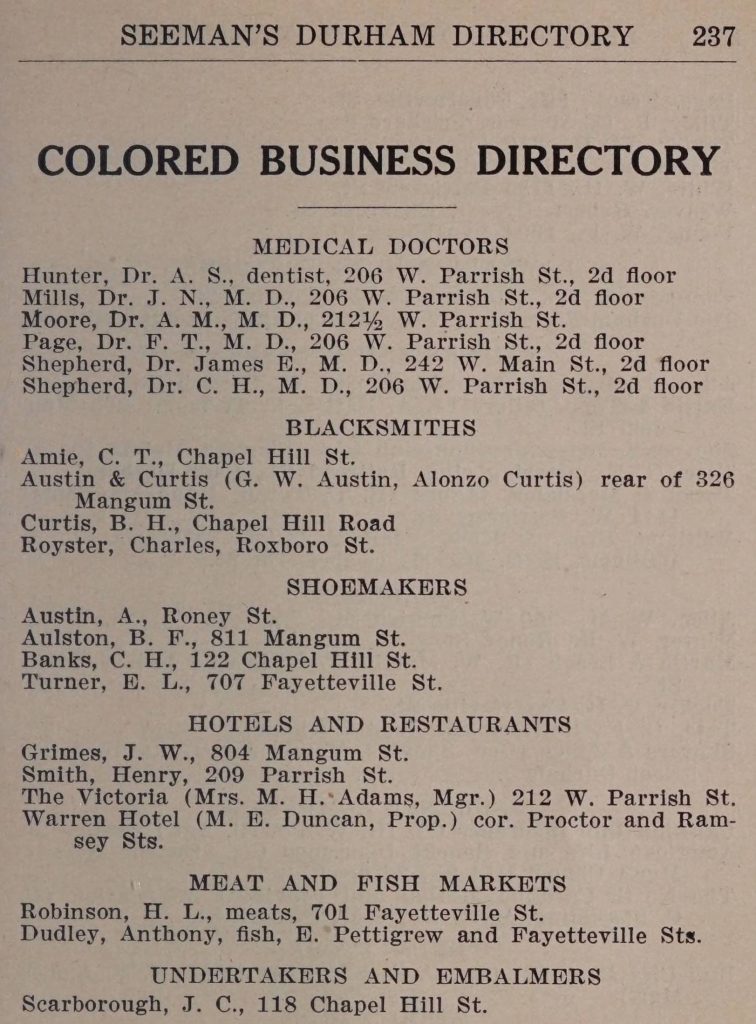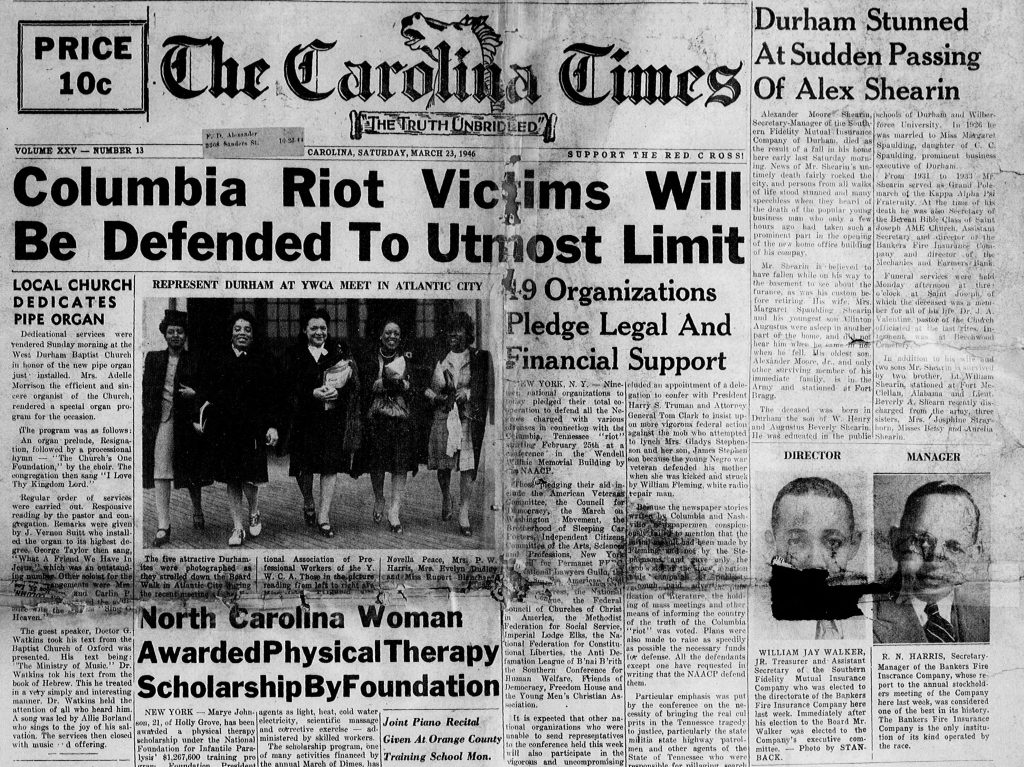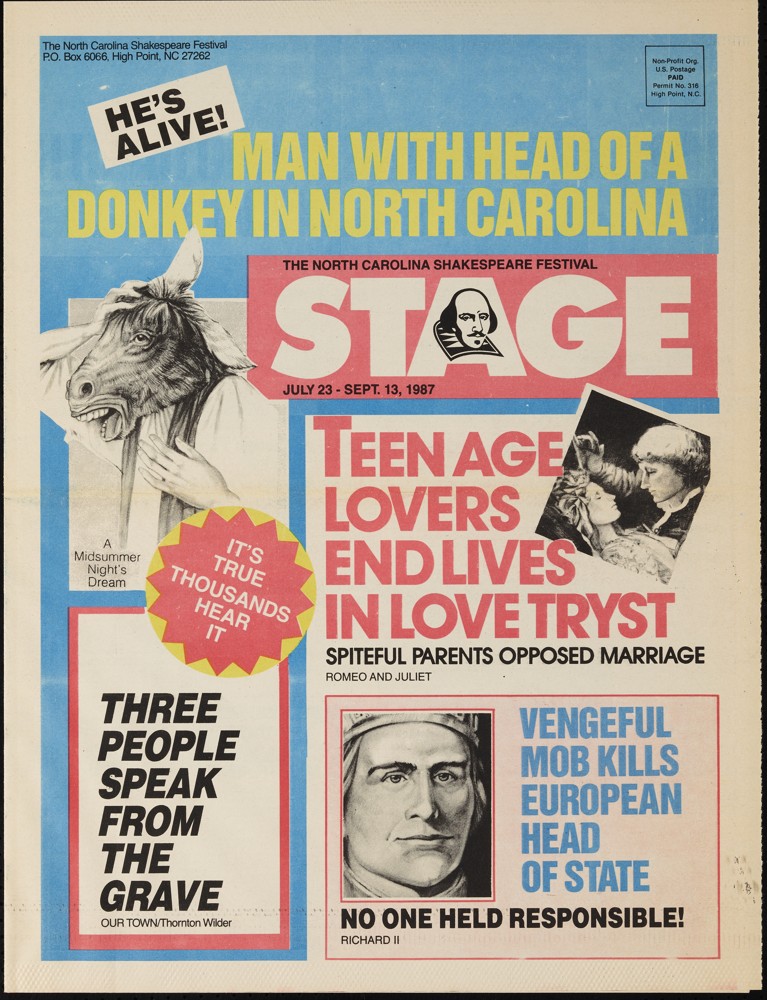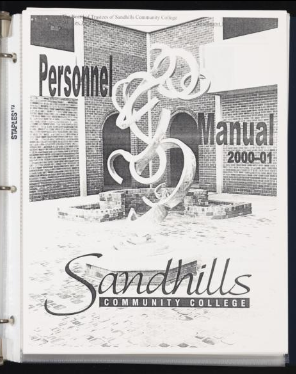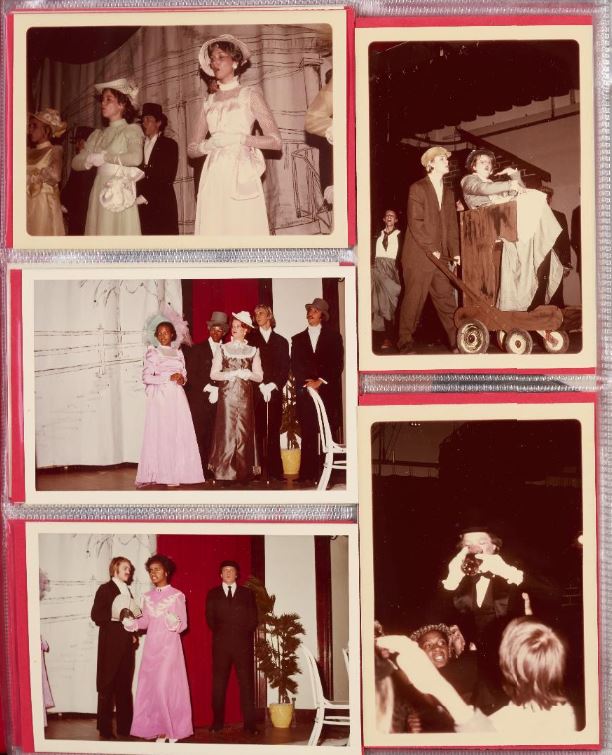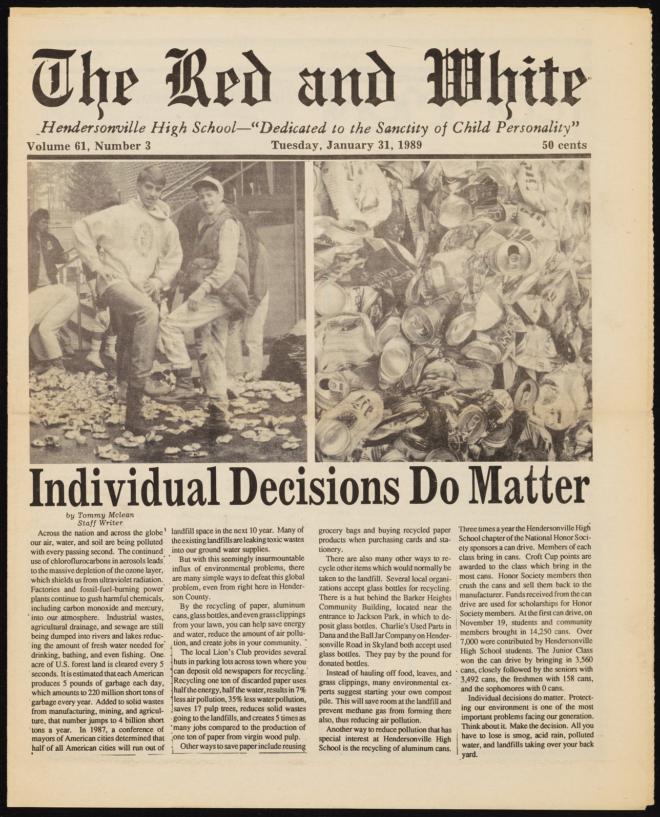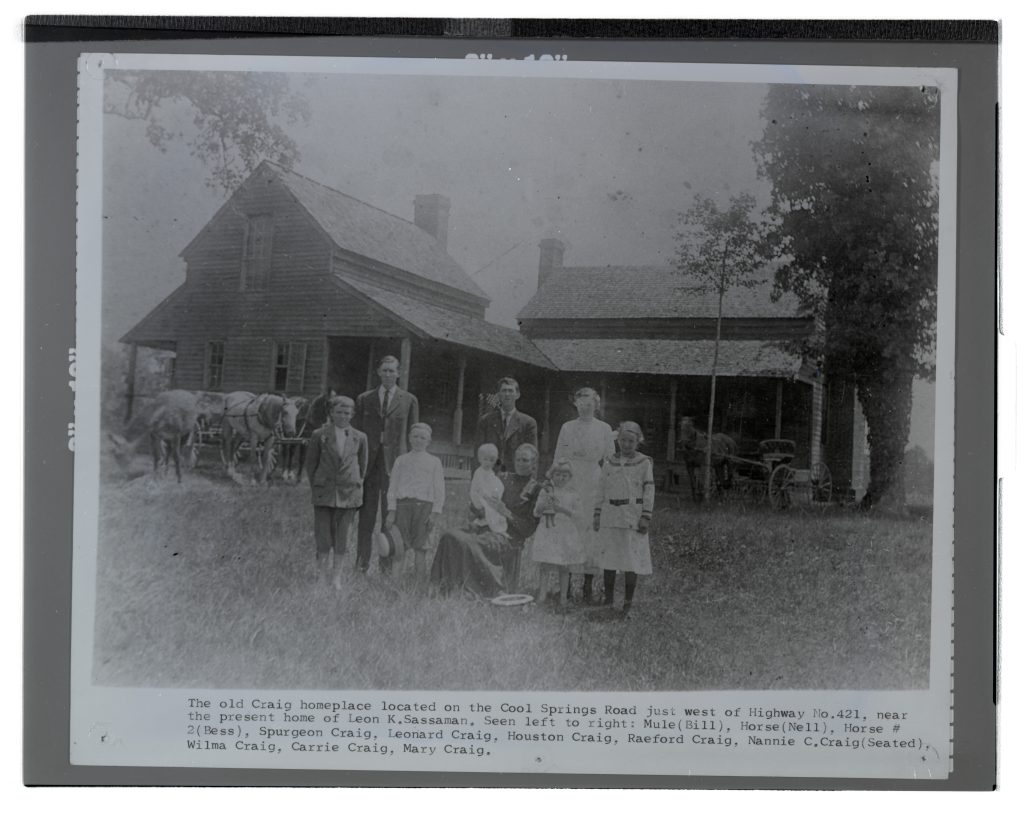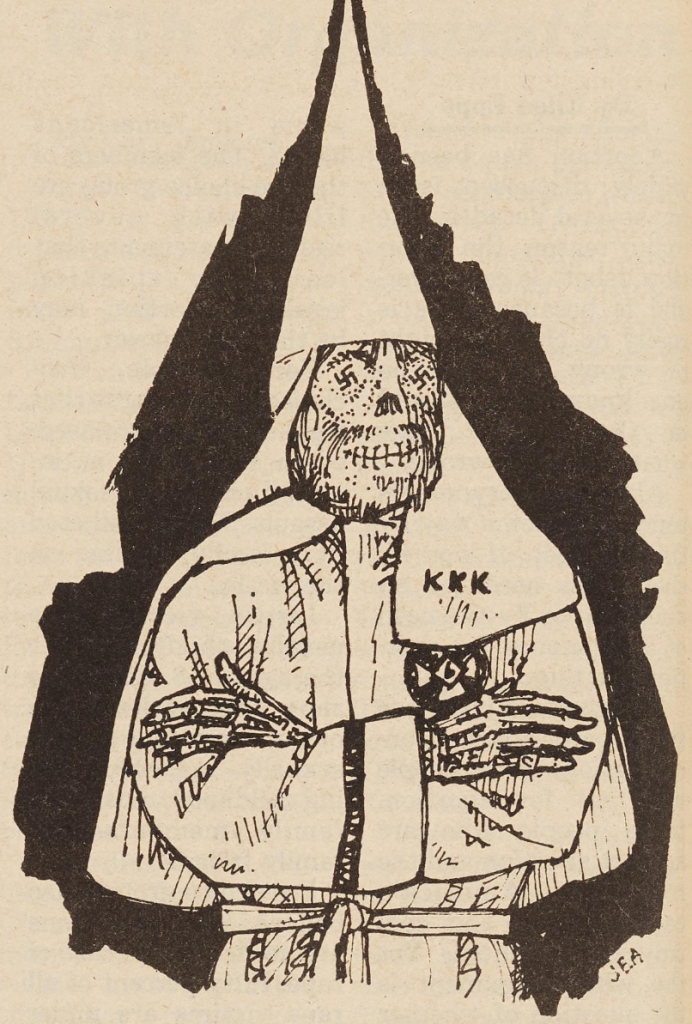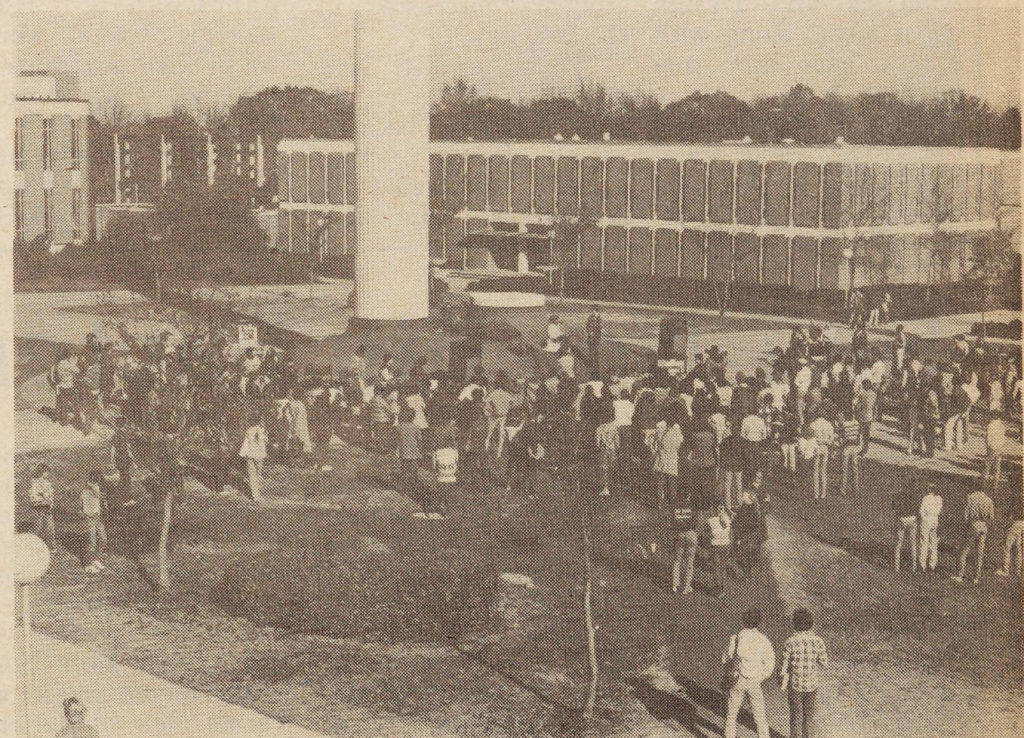Thanks to our partner, Henderson County Education History Initiative, 19 yearbooks from Henderson County high schools are now available online. The batch includes yearbooks spanning from 1949 to 1971 from East and West Henderson High Schools, Dana High School, Fletcher High School, and Mills River High School.
An interesting find from this batch comes from East Henderson High School. In their 1971 yearbook, The Highlander staff briefly note the change in dress code policy which allows women to wear pantsuits to school. They cite cold weather, increased absences, and students’ desire to be different as reasons for the change. Considering how commonplace the practice is today, it is discombobulating to discover that women wearing pants in public has only fairly recently become socially acceptable in Western society.
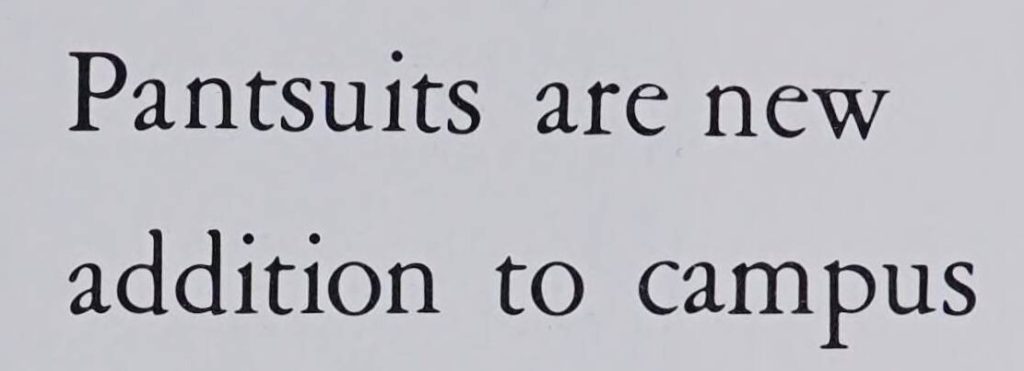
While women have been wearing pants since before the Victorian era, it was not until the early 20th century that state laws and a 1923 statement (not an official ruling) from the United States Attorney General declared that it was ok for women to wear pants in public. Despite the legal acceptance, societal pressures and policies continued to limit the wearing of pants only to situations where women were exercising, doing chore work, or in private.
Societal acceptance of pants began to shift with the outbreak of World War I and then World War II when women were called upon to fill vacant positions in line production, factories, mechanics, shipyards, etc. In these positions, pants were an absolute necessity for women for practicality, safety, and comfort. After World War II, the popularity of pants lingered amongst women, but remained a socially unacceptable garment to wear as fashion returned to centering dresses and skirts. From the mid-1950s to 1970s, the United States went going through a period of social reform which included the Civil Rights Movement as well as Second Wave Feminism which changed a lot of what was previously seen as socially acceptable. Second Wave Feminism (also sometimes referred to as the women’s liberation movement) sought social and political equality for women—prioritizing issues of reproductive rights, financial independence, domestic violence, workplace equality, and gender roles.
Successful campaigns helped to pass legislation such as the Equal Pay Act of 1963 and Title VII of the Civil Rights Act of 1964, which focused on women’s rights to equal pay and preventing employers from discriminating on the bases of race, religion, sex, or national origin. *It is important to note that white women were the primary benefactors of these efforts, while Black women continued to be disenfranchised. Undoubtedly, the efforts and successes of Second Wave Feminism led to pants becoming a socially acceptable and commonplace clothing option for women.
In addition to The Highlander [1971], the societal shift to accepting pants as an appropriate clothing choice for women can be tracked through materials available on DigitalNC such as the St. Mary’s School course catalogs from 1970 and 1971, the Winston Salem Journal‘s inclusion of an article from the Philadelphia Record discussing legislation that allows women to wear pants in 1921, grievances listed by Winston Salem State University students in the June 1, 1965 issue of their student newspaper, and more.
To learn more about the Henderson County Education History Initiative, please visit their website linked here.
To view more materials from the Henderson County Education History Initiative, please visit their contributor page linked here.
To explore more yearbooks from across the state, please visit our North Carolina Yearbook Collection linked here.
Information about Second Wave Feminism was taken from the National Women’s History Museum, to learn more about Second Wave Feminism, please visit the National Women’s History Museum’s online exhibit titled “Feminism: The Second Wave,” linked here.


